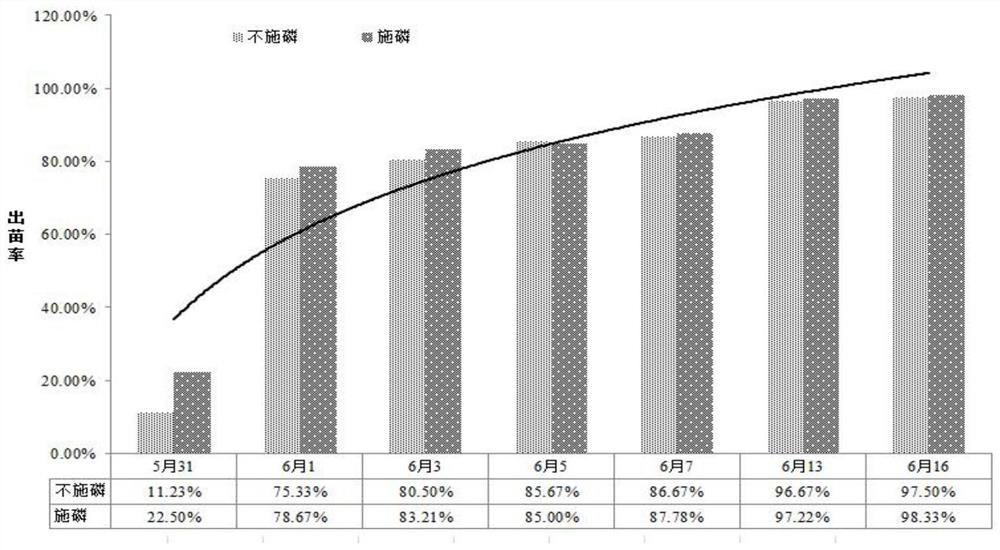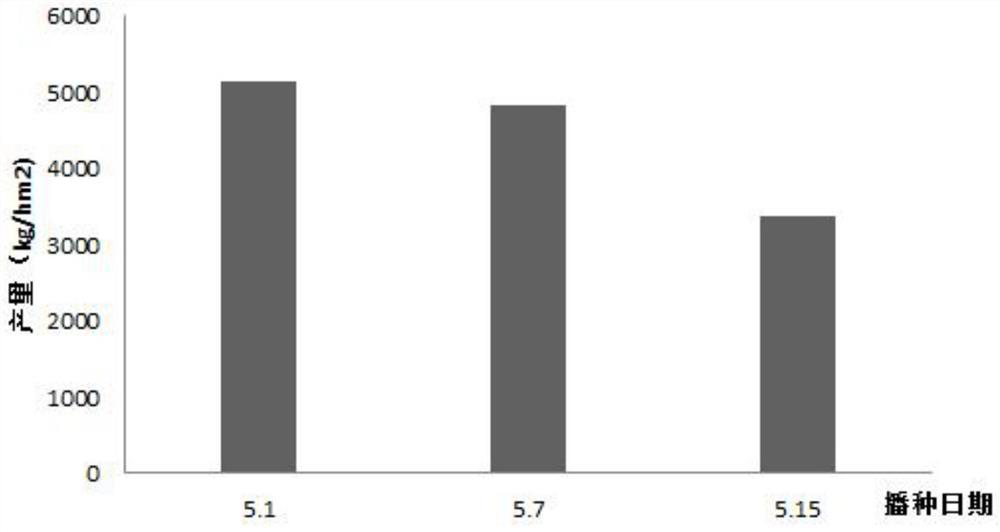Cultivation process for improving low-temperature resistance of peanuts
A low-temperature-resistant peanut technology, which is used in legume cultivation, seed coating/seed dressing, fertilizer made from biological waste, etc. and other problems, to achieve the effect of increasing the maturity of the pod, improving the low temperature resistance, and strengthening the thermal insulation effect.
- Summary
- Abstract
- Description
- Claims
- Application Information
AI Technical Summary
Problems solved by technology
Method used
Image
Examples
Embodiment 1
[0028] The planting test base is in Gongzhuling City, Jilin Province, and the land with deep soil layer, fertile cultivated layer and flat terrain is selected.
[0029] The invention provides a cultivation process for improving the low temperature resistance of peanuts, which comprises the following production steps:
[0030] Step 1: Soil preparation, ridge making, and fertilization: plow to a depth of 20 cm, and use the rotary plow and harrow to achieve deep, loose, fine, broken, flat, no weeds, no root stubble and timely ridges; autumn culling Ridges, the distance between the ridges is 60cm. Fertilizer is applied once as base fertilizer, every 666.7m 2 Use 50kg of bio-organic fertilizer after composting and 15kg of peanut peel, then add 15kg of urea, 15kg of potassium sulfate, 35kg of superphosphate, and 8kg of calcium oxide.
[0031] Step 2: Seed treatment: Peanuts are sun-dried for 2-3 days before shelling, shelled 7-10 days before sowing, and insects, buds, and rotten f...
Embodiment 2
[0044] The planting test base is in Gongzhuling City, Jilin Province, and the land with deep soil layer, fertile cultivated layer and flat terrain is selected.
[0045] The invention provides a cultivation process for improving the low temperature resistance of peanuts, which comprises the following production steps:
[0046] Step 1: Soil preparation, ridge making, and fertilization: plow to a depth of 25 cm, and use the rotary plow and harrow to achieve deep, loose, fine, broken, flat, no weeds, no root stubble, and timely ridges; autumn ploughing Ridges, the distance between the ridges is between 60cm. Fertilizer is applied once as base fertilizer, every 666.7m 2 Use 50kg of bio-organic fertilizer after composting, 15kg of peanut peel, 15kg of urea, 15kg of potassium sulfate, 25kg of superphosphate, 5kg of calcium oxide, and fertilization depth of 10cm;
[0047] Step 2: Peanuts are sun-dried for 3 days before shelling, shelled 7 days before sowing, and insects, buds, and r...
PUM
 Login to View More
Login to View More Abstract
Description
Claims
Application Information
 Login to View More
Login to View More - R&D Engineer
- R&D Manager
- IP Professional
- Industry Leading Data Capabilities
- Powerful AI technology
- Patent DNA Extraction
Browse by: Latest US Patents, China's latest patents, Technical Efficacy Thesaurus, Application Domain, Technology Topic, Popular Technical Reports.
© 2024 PatSnap. All rights reserved.Legal|Privacy policy|Modern Slavery Act Transparency Statement|Sitemap|About US| Contact US: help@patsnap.com










